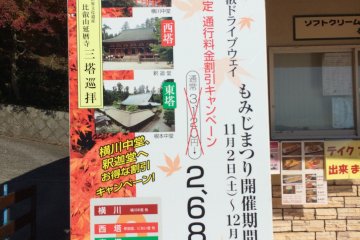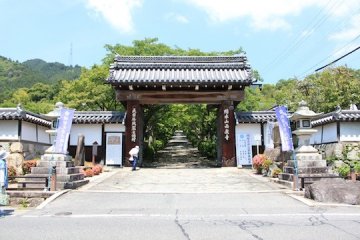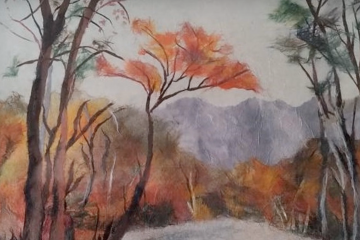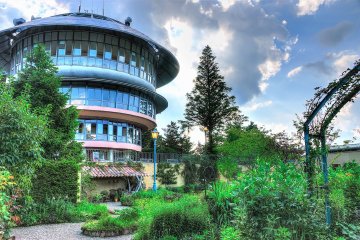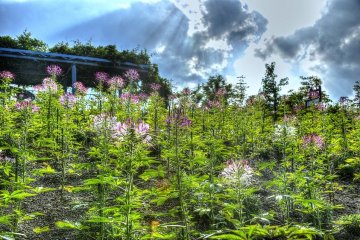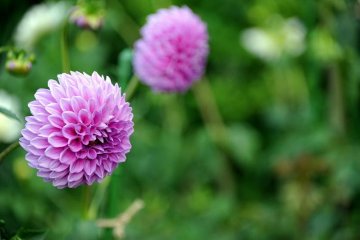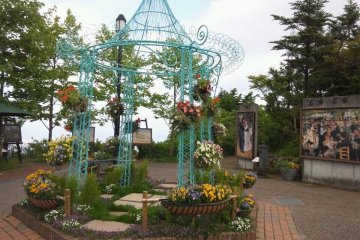Like many photographers, I have a symbiotic relationship with nature. Shall I try to put my mark on it, or leave it as it is, unpolluted by human ideas? From artists to poets, philosophers to princes, everyone has different ideas on how to interpret its beauty and mystery.
Prince Hermann von Pückler-Muskau (1785-1871), the author of the book Hints on Landscape Gardening, loved the wild beauty of nature, but at the same time, wanted to frame it in human terms, having a space that is simultaneously cultivated and wild. Artificial mountains and lakes were placed in exact locations and shapes to create a picture book quality. Come to think of it, many pictures I take are like that too, I want the landscapes to appear in a certain position, the trees not too high or low, the composition simple, balanced, yet have a point of interest.
The Garden Museum park takes this concept a step further, by having framed pictures of nature, in nature itself, like art imitating life. The juxtaposition of the Monet’s garden paintings against the backdrop of natural landscapes give me food for thought, like, which is more beautiful, the paintings or nature itself. Also, it makes me think of the whole concept of an open air art gallery. Nature at its most beautiful is the biggest art gallery of all.
Some paintings are exactly the same as the background, like Monet’s Iris lake, while others are totally opposite, yet complementary, like a painting of a lake, set against a view of the majestic mountains. The color of the lake is the same as the mountain greenery, though as the light changes throughout the day, you can see how the landscape changes, against the unchanging paintings, locked in time. It gives a different meaning to artificial scenery, a concept well known to most Japanese. It also made me think of the whole concept of “still life”.
From Kyoto or Osaka, take the Keihan train to Demachiyanagi terminal. Walk about eight minutes north to the tram line Eizan line train to Yasehieizanguchi Station. As both the Hien zan and the Kurama trains both leave from the same station, make sure you catch the Hiei zan train which branches eastward after Takaragaike station. At Yasehieizanguchi, switch to the cable car, and after that, switch to the ropeway. (All up about 1100 yen) It sounds complicated, but you are effectively going the end of each transport mode, and then hopping on to the next line to the end, and so on. Otherwise, there are direct buses from JR Kyoto on the weekends (800 yen).
The alternative route is via Shiga, which is may be a touch quicker, and cheaper for JR Pass holders. From JR Kyoto station, take the JR Kosei Line for four stops to the northeast. After getting off at Hieizan Sakamoto station, either walk 15 minutes or take a bus available only Sunday and Saturdays to the cable car station. The cable car runs every half hour and takes about 15 minutes to the upper station where you can get the spectacular view of Lake Biwa, the largest lake in Japan. There you can check the time of the last descending cable car, which is normally 4:30 p.m. in December and 6 pm in the other months.
The view from the Cable Car of Lake Biwa and Otsu city reminds me of the cable car from Hong Kong to Victoria Peak, steep and majestic. Being so far up (848m), it is a cool retreat from Kyoto in the summer heat, and in autumn, it is one of the first places to see autumn foliage. In winter, the place is quiet, covered with a blanket of snow.



